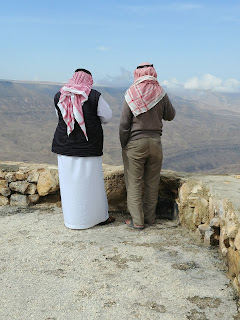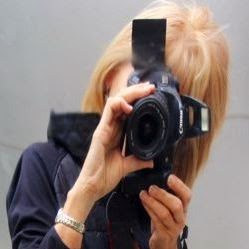When you least expect it... sometimes it's the unexpected surprises that are the best.
As we head from Amman toward the Dead Sea we settle in for a long bus ride. The day is better today, blue sky and warm. We have a few stops planned along the way.
One such stop is the Mujib Valley, known as Jordan's Grand Canyon. As we approach we wind down to a lookout point. Here a couple of local men have set out some woven rugs and wall hangings. The vista of the canyon is spread out below, the fog almost dissipated with traces hanging over the hillsides. It is vast and impressive.
 At closer glance there is a shepherd in the distance with his herd of sheep and goats around him. We realize he is moving his herd toward the area below us. And we are treated to an unexpected demonstration as he shepherds his herd right past us, up a small embankment and onto the road.
At closer glance there is a shepherd in the distance with his herd of sheep and goats around him. We realize he is moving his herd toward the area below us. And we are treated to an unexpected demonstration as he shepherds his herd right past us, up a small embankment and onto the road. 
Onward.... we settle back in the bus and continue on our journey. Next stop, Mukauer Fortress. This is the ruins of an old fortress that sits high atop a hill overlooking the Dead Sea. We are eager for our first glimpse of the Sea and across to Israel.
However, as we near the spot we see a heavy fog hanging over the valley and the Sea. Tony, our guide, warns us that, while we can still hike up to the fortress we will likely not be able to the Sea.
Mukauer, or Machaerus, is said to have been the place where John the Baptist was held and executed in 32 AD by Herrod. The history and the age of this area continue to awe me.
The trail up is clear so we decide to do the hike to the ruins.
At the top the remnants of the fort spread out across the landscape. All around the valley drops off steeply but the view is totally obscured. We accept that we will not have our anticipated view. I take one last walk around the hilltop venturing further toward the outer rim. And as I do I see the first glimpse of a body of blue below the cloud. And as the clouds begin to dissipate the Dead Sea comes into view. Quickly I scamper back up signalling to the others in our group... come quick!! The Dead Sea!! It is spread out below us...
Sometimes the unexpected surprises are the best!
Come With Me to the Dead Sea....
..

































